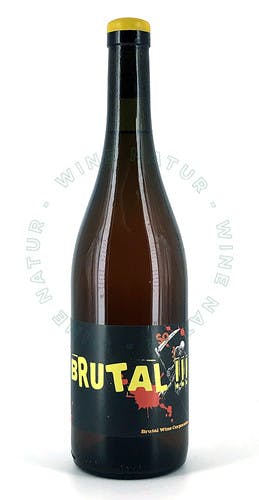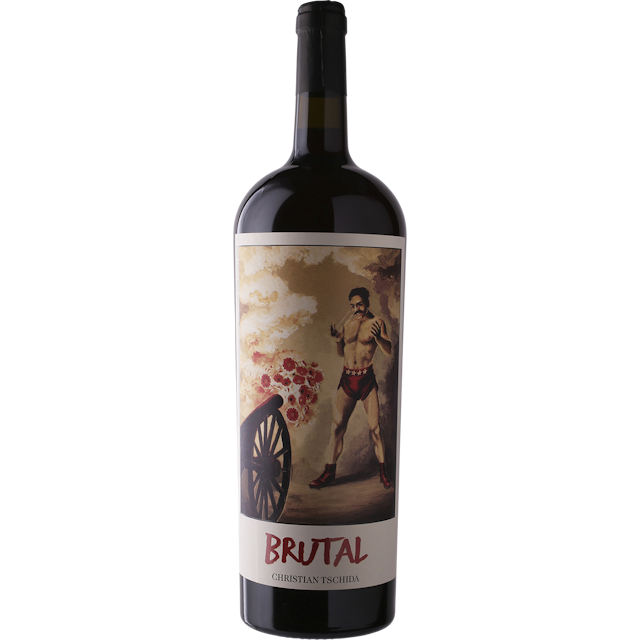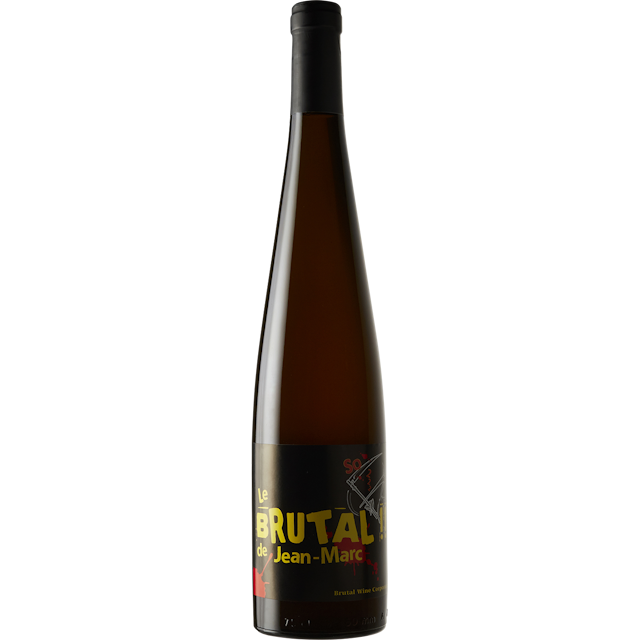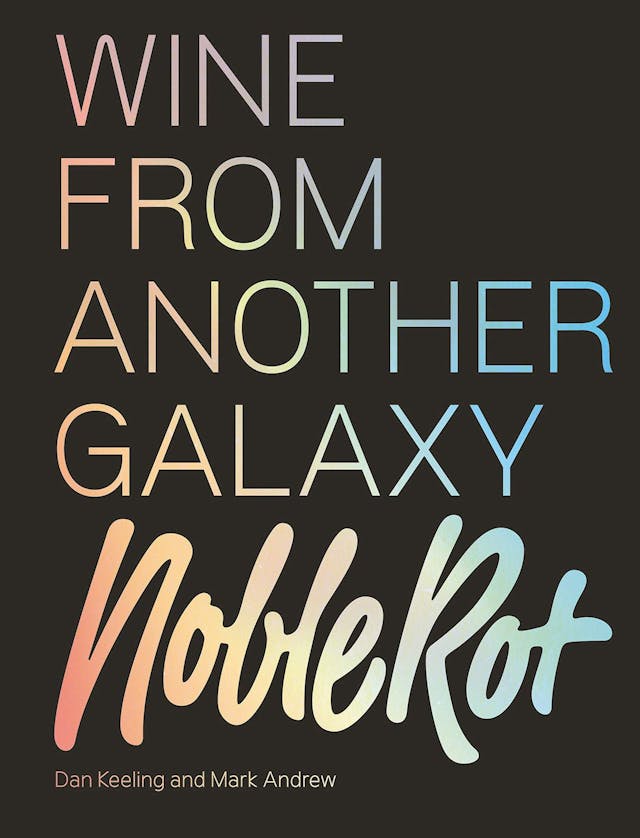Graydon Gordian | May 26, 2021
The Brutal Wine Edition
On wine, a movement, and mystery
Recommended Products

A zero/zero, limited production, experimental style wine featuring a grim reaper clutching a scythe, splattered red paint, and the word Brutal followed by three exclamation points on the label.

A wine produced under the Brutal label, embodying the movement's philosophy of zero/zero production, limited quantity, and experimental style.

A Brutal label wine, characterized by its adherence to zero/zero production methods, limited batches, and an adventurous, experimental style.

Part of the Brutal wine movement, this wine stands out for its zero/zero approach, limited production, and bold, experimental approach.

A wine embracing the Brutal philosophy with zero/zero production, a limited number of bottles, and an experimental style, featuring the iconic Brutal label.

This book by the team behind British wine magazine Noble Rot aims to explore the wine world in an engaging and less traditional manner.
Graydon Gordian (GG) has written for WITI on several occasions, but after much deliberation has decided he is ready to compete with Felix Salmon for the wine beat.
Graydon here. To call the wine market fragmented is to put it lightly: wine brands are practically as numerous as the stars. Mere awareness is difficult to achieve, much less affinity. This sets it apart from its alcoholic cousins beer and liquor, both of which are dominated by a few behemoths. Your local cool liquor store likely still carries Johnny Walker. Hip beer stores still stock Budweiser. But a good wine store wouldn’t be caught dead with bottles of Yellow Tail on the shelf—partly because there is arguably an inverse correlation between quality and recognizability.
Consistency is a key characteristic of quality in beer and liquor, enabling a certain scale of operation. The opposite is true in wine, in which geographic hyper-specificity and year-over-year variance (if not bottle-to-bottle or even sip-to-sip) are inherent parts of the category. To mass-produce wine is to by definition ignore the aspects of winemaking that are likely to make great wine, such as a commitment to capturing a sense of place or a sensitivity to how the season affected the harvest. Any given winery does not lend itself to the scale needed to establish broad recognition, much less ubiquitous distribution.
Historically, winemakers solve this by prominently associating their wine with a region or varietal. A consumer might have never heard of Marcel Lapierre, but perhaps they remember enjoying the last Beaujolais they tasted and can narrow their search to the three to six wines from that region even the smallest wine store is likely to carry. Shopping gets a bit easier when you know your dad likes Cabernet Sauvignon. A slightly more informed consumer might use appellations (smaller areas with which a winemaker is allowed to identify her wines if they abide by certain rules) as a similar, more detailed decision-making tool. I generally prefer Savennieres to Saumur Blanc, both Chenin Blancs produced in France’s Loire Valley, but I could only name you a producer or two from either area.
Why is this interesting?
There are a few recent, notable attempts to overcome these brand-related challenges. Wine importer Mary Taylor is using a laser focus on appellation and a simple, winery-neutral visual identity to sell high-value wines in the United States. Natural wine importer Selection Massale’s house brand La Boutanche has a similar approach, selling affordable low-intervention wine made by the stars of their portfolio in playfully labeled but recognizable liter bottles. Berkeley-based producer Broc Cellars is tackling the assumption that scale and quality cannot mix head-on. There is a common sensibility across both their label design and winemaking that allows their ever-expanding list of wines to achieve a degree of recognizability most wineries could only dream of. (Although there are some rumblings that perhaps Broc Cellars has gotten a bit too big and isn’t quite what it used to be!)
But from my perspective, the most interesting wine branding project going on right now is Brutal!!! Wine. The mere fact that I just called Brutal a brand might cause its creators to bristle. It might better be defined as a movement, a philosophy to which any winemaker the world over can commit herself.
Brutal wine must be zero/zero, “nothing added, nothing removed.” In other words, no fining (a technique for removing tiny molecules from the wine) or filtration is allowed, nor can any sulfur be added to the wine. (Additive processes like chaptalization are too obviously offensive to even merit mention.) The production must be limited, under 200 bottles by some accounts. And the style must be experimental, to the point of being unashamedly flawed. As long as it embraces those characteristics, the wine can bear the name Brutal and reference the increasingly iconic label featuring a grim reaper clutching a scythe, splattered red paint (or is that blood?) and the word Brutal followed by three exclamation points.
Who manages this brand? It’s unclear. It doesn’t appear to be Barcelona’s Bar Brutal, although they are certainly zero/zero wine advocates and a group of rowdy Catalan winemakers plays a pivotal role in the brand’s potentially apocryphal origin story. But its production is in no way limited to, or even centered around, Spain. Natural wine luminaries as diverse as Christian Tschida, St. Reginald Parish, Gut Oggau and Christian Binner have all produced wines under the Brutal label. Who told them they could make a Brutal wine? Were they given permission? I’ve never seen those questions answered definitively. The fact that the public knows so little about Brutal is part of its allure: in a world where control and consistency are the defining characteristics of good brand management, Brutal is an ever-changing enigma that nonetheless no wine store can keep in stock. (GG)
Wine Event of the Day
Wine tastings can be a bit drab. It’s certainly an activity with opportunities for improvement. Enter @rieslingstudy, a collaboration between German wine curator/importer Source Material and wine collector Robert Dentice (aka @soilpimp). Fueled by vinyl and high acid white wine grown on Western Germany’s steep slopes, these dinners (and the apparently rowdy after parties) are finding new ways of connecting food, music, and the best wine this side of the Mosel river. Follow them on Instagram for a chance to score an invite. (GG)
Quick Links:
Issue 9 of indie wine mag Pipette ships in June. Don’t miss out on some of the best writing about the natural wine world. (GG)
The FT’s Jancis Robinson on the recently deceased Steven Spurrier, who set up the most famous wine tasting of all time. (GG)
If you find the wine world to be a bit stuffy and exhausting but still want to learn more about fermented grape juice, Wine From Another Galaxy by the team behind British wine mag Noble Rot might be the book for you. (GG)
Thanks for reading,
Noah (NRB) & Colin (CJN) & Graydon (GG)
—
Why is this interesting? is a daily email from Noah Brier & Colin Nagy (and friends!) about interesting things. If you’ve enjoyed this edition, please consider forwarding it to a friend. If you’re reading it for the first time, consider subscribing (it’s free!).


